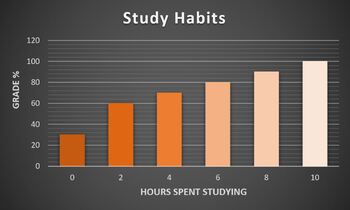The Pennsylvania State University offers its’ students guidelines on how many hours they should spend studying per credit hour of coursework. According to Penn State Behrend’s website, “as a general rule, plan to spend two hours outside the classroom for each enrolled credit hour” (Penn State Behrend). For a sixteen-credit courseload, that’s 32 hours of outside work. For someone taking 17 or 18 credits, it adds up to almost 20% of the day spend on work outside of class- in addition to class-time, extracurriculars, eating and sleeping.
If 33% of the 168 hours in a week were spent sleeping, 20% working on homework, 10% in class, 20% between eating and running errands, and another 10% for extracurriculars, we’re left with a grand total of 7% of the day for ourselves. I’t’s slightly less than 1.68 hours per day (including on weekends). For many, this is inachievable. It’s a goal that neglects personal and emotional needs. However, this guideline has a much more jarring issue that needs to be addressed.
Like the majority of my other posts which talk about the primary issue of movements/ideas being their solutions being created through an incorrect lens on the problem, this guideline follows suit.
Creating an objective for students to prioritize time studying over material studied sets a bad example for how studying should be completed in the first place. In my opinion and experience, inefficient studying can often be worse than not studying at all. If we are either going through concepts we’re already confident on, or failing to clarify concepts that we’re confused on, there is no actual ‘studying’ being done. No matter if thirty minutes or four hours were spent, inefficient studying can make those two times have the same result.
Furthermore, as we traverse into spending copious amounts of time on the same subject in the same amount of time, our brains become exhausted. Imagine spending six hours straight doing bicep curls: you probably won’t be able to pick anything up for the next week. Here is where the idea of spaced studying/learning leans more towards the right direction as spacing allows your brain to retain knowledge (similar to developing muscle) but doesn’t overwork it and burn it out right before an exam.

Each student’s method for studying also differs. An approach to an overall guideline of two hours per credit hour can’t apply to every student because each student’s brain works differently and therefore they process information differently. Personally, I track my study time through an app/website/chrome extension called Toggl. It allows me to analyze the subjects I’m spending the most time on, my most productive hours, and helps me create my own guidelines for study time goals. For instance, since Monday I’ve spent almost four hours on Math 140H homework/studying, and only an hour on my Econ 102 homework. Some classes inherently come easy to some and hard to others. Similarly, some classes require different amounts of work outside of class and spending an equal amount of time on both ‘hard’ and ‘easy’ classes wouldn’t be beneficial for understanding either subject.
Students who stick by Penn State’s guidelines as a rulebook for getting good grades will certainly have terrible times in their first exams. Instead of promoting an outdated and biologically inaccurate method of working, students should learn to know their weaknesses and how to attack them efficiently, space out studying in order to have productive results, and ditch the feeling of success that comes alongside the phrase “I just studied for four hours straight!” Promoting comprehensive education about the biological, emotional, physical and mental components of effective studying could push students (especially first-years) out of ineffective studying methods and give way for better grades and better class pass rates.
References:
“Academic Expectations and Preparation.” Penn State Behrend, 2020, https://behrend.psu.edu/Academics/academic-services/adult/degree-and-certificate-programs-1/academic-expectations.
Goodman, David. “Interpreting Graphs: Study Habits Graphics.” TeachersPayTeachers, 02 May 2020, https://www.teacherspayteachers.com/Product/Interpreting-Graphs-Study-Habits-Graphics-5530003.
I enjoyed your thoughtful analysis of Penn State’s studying guidelines, and I was particularly surprised by your conclusion on the amount of hours allotted to us per day for ourselves. 1.68 hours seems like far too little. I also agree that the blanket 2 hours per credit guideline is poor. I find myself taking upwards of 12 hours completing homework for a 4 credit course, while spending simply an hour or two completing work for another 3 credit course.
I think you should send this to the actual school. Seeing the stats really opens my eyes to how much work we actually have. Great article!